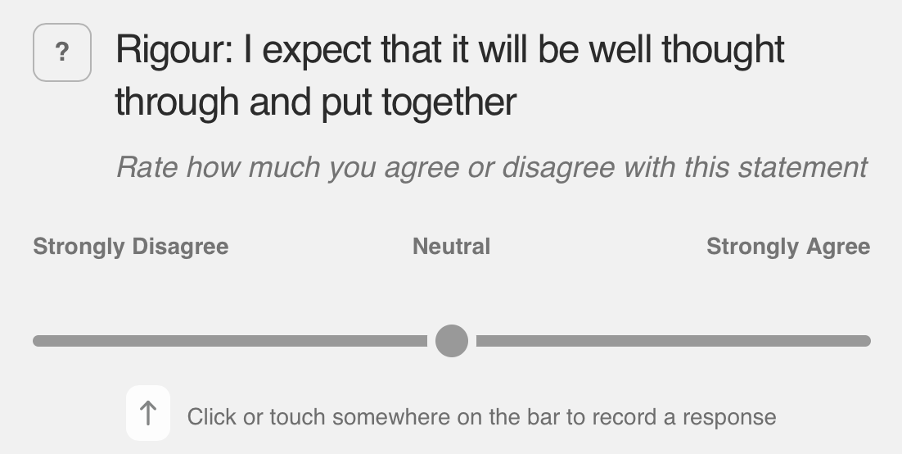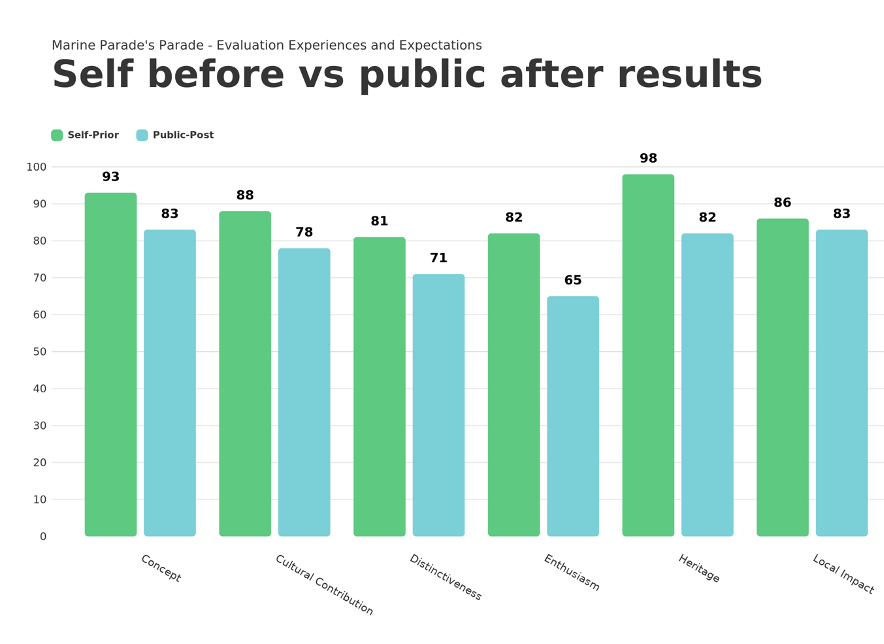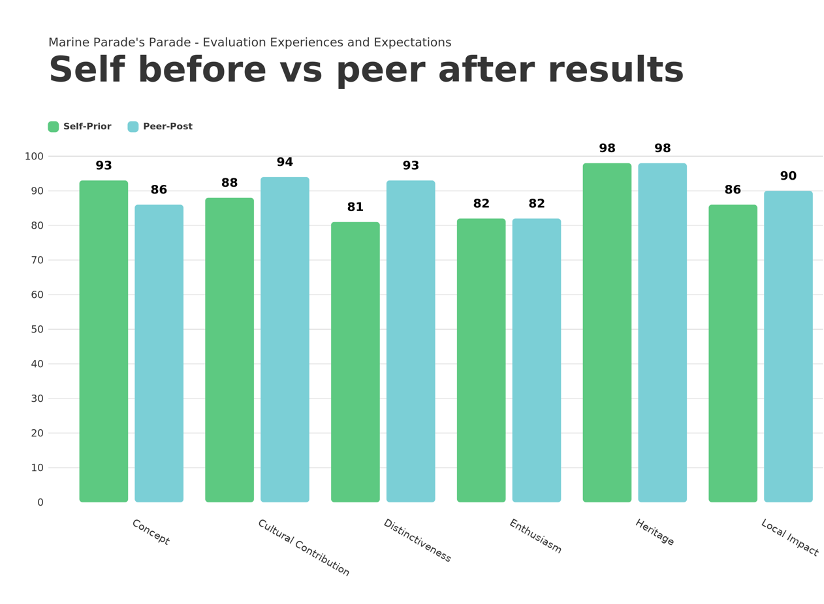If you’ve been exploring Arts Council England’s (ACE) recently announced Investment Principles, in particular the Ambition & Quality principle, you may be wondering how best to measure and evaluate individual pieces of work in ways aligned with this principle. We encourage you to consider the Impact & Insight Toolkit (Toolkit) which can be used to gain a powerful 360-degree perspective on your work.
The Toolkit is a sector-led project, funded by ACE, which aims to support arts and cultural organisations and artists to understand if and how they are meeting their intentions.
ACE defines the Ambition & Quality principle in two components as below:
- Ambition: the formulation and articulation of what you want to achieve and how you plan to achieve it.
- Quality: the delivery of your activity and the evaluation of it against your ambitions.
One way in which you are able to use the Toolkit to satisfy this principle is through the process of:
- Considering your ambitions (intentions) for the piece you plan to evaluate
- Exploring the co-created dimensions (outcome-focussed questions) and consider if any match the intentions highlighted in step one
- Insert the selected dimensions into a ‘prior’ survey for involved parties to record and articulate their intentions
- Create a survey with the same dimensions for audience members or participants to complete
- Create a survey with the same dimensions for peer reviewers (people who can provide a professional perspective on your piece) to complete
- Compare the intentions of the work with both the audience’s experience and the peer reviewer’s reactions in order to see whether the intentions were actualised
Through the process of considering dimension choice and then measuring your expectations against each, you are stating what it is that you want to achieve and the extent to which you want to achieve it.
Once the work has occurred, you can reflect on the intentions and consider to what extent they were met.
Let’s think about the below dimensions:
Thought Provoking – It was thought-provoking
Local Impact – It’s important it’s happening here
Motivation – I feel motivated to do more creative things in the future
These three dimensions are clearly all very different and measuring different things. Through the prior survey, an organisation or artist using the Toolkit would be able to indicate the extent to which they hope their work will achieve the outcome stated.
For instance, let’s say that the organisation I am working for is based in Emsworth, a small harbour-side town on the south coast. Engaging with local young people, the work I am delivering is a participatory dance project around the subject of plastic pollution in seas.

Photo by Naja Bertolt Jensen on Unsplash
Now, whilst I might feel that the three outcomes mentioned above are all important to the success of my project, it might be that one is more important than the others. Therefore, it might be that I rate the dimensions Thought-Provoking and Local Impact quite highly (say, 80 out of 100) but that Motivation is the most important, and I would therefore score it the most highly (say, 95 out of 100).
It is crucial that it is understood that the Toolkit isn’t about ensuring that organisations or artists achieve very high scores across the board. Instead, it is about reflecting on your intentions for a specific piece of work and expressing these in a measurable fashion.
The recording of intention is achieved through the use of a bar with a sliding scale.

The numbers (0-100) are not shown on the bar, as this method is trying to remove the overthinking around the selection of a specific score and is instead trying to focus on recording a ‘gut reaction’. However, in actual fact, each point on the bar has its own score. The far left is 0; the centre point is 50; the far right is 100. By indicating the extent to which you agree with the statement, you are articulating what you want to achieve and the extent to which you want to achieve it.
Once the work has occurred, the same dimension is presented to members of the public and peer reviewers that experienced the work.

Once all the data has been collected, the Toolkit will automatically produce graphs to demonstrate how aligned the expectations are experiences were.

 [1]
[1]
This can then prompt the organisation or artist to consider whether the results were as expected and, if not, why that might have been…
The thing that is really important to consider when looking at numerical data is to remember that the numbers are only a very small part of the story! We like to think of the numbers as kickstarting a conversation within your team about what the responses indicate and what you might choose to do with that information.
By having a way of measuring intentions and comparing them with experiences, the understanding of the overarching quality of your work and other publicly funded artistic and cultural experiences will increase.
Within the Toolkit, there are many dimensions available to be chosen. The dimensions have all been co-produced with creatives in the sector, as well as funding bodies and expert peers. That’s why we are confident that there will be suitable dimensions that speak to the objectives of your work, whether they are participatory or presentational; delivered in-person or online; delivered outside or indoors…
Participatory
Participatory dimensions have been key to the development of the Toolkit since its inception in 2013. More than 30 participatory-focussed arts and cultural organisations in the UK have attended workshops and webinars to develop, test and refine participatory dimensions. CWC has also worked with participatory-focussed organisations in order to develop further questions in order to provide further insight into the impact of participatory experiences. We know that participatory work is integral to the arts and cultural offer in the UK and we want to support you in demonstrating the impact of this!
Online Works
Art and cultural works have been delivered online for many years but, since 2020, it has become more commonplace to deliver both presentational and participatory works online. Working with arts and cultural organisations, peers and Arts Council, we developed an online works evaluation template to help organisations delivering work online understand the impact of their work. This template can be added to or taken away from in order for you to gather the most appropriate and insightful information. It is completely customisable and is a great starting point for you to create an evaluation that really ‘speaks’ to your online work.
Outdoor Arts
In 2021, we collaborated with arts and cultural organisations and expert peers to produce a small bank of questions to provide additional insight, specific to outdoor arts works. The prevalence of works occurring outdoors has greatly increased, and it’s important that we proactively support the portfolio in gathering information to demonstrate the impact their work is having. These additional questions can be added to your chosen dimensions (we would suggest you check out the Placemaking category) to create a really insightful evaluation, helping you to demonstrate the impact of your work!
The Impact & Insight Toolkit has been developed primarily to support arts and cultural organisations and artists in understanding whether their intentions are being met and to be able to speak with one voice about the impact of their work on those that experience it. We want to support all funded organisations to understand and better communicate their ambition and the quality of works they’re delivering to communities across the country.
If you want to get involved, register to use the Toolkit and we will be in touch!
Image credit: Photo by Kristopher Roller on Unsplash
[1] This is what I like to call ‘fake data’ and is not based on a real event or with data collected from individuals.